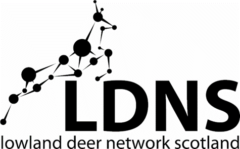It has been an interesting period for me given the Survey that we undertook, “What do you have and what do you want”, which produced 127 responses, 70 of which indicated an interest in a grant to improve carcass preparation, 4 were not complete and of the 66 left, 6 were for larger scale operations and 60 were for personal developments. This project was just in time to show that there was an interest and a need for grant awarding something. Nature Scot agreed to provide funds to support the findings of the survey and £85,000 was made available thought the offices of SAOS, Scottish Agricultural Organisations Society, who would manage a grant Awarding Scheme.
Application forms were devised, and interviews were undertaken, eventually the likely candidates were short listed and 13 were offered contracts to ensure continuance of service and security of possession. Meantime I had been in discussion with suppliers of chillers ad processing units to attempt to negotiate a discount for bulk purchasing. Discounts were generously offered and folk are now acquiring their discounted equipment.
This has been the main project since we communicated last, also I have been busy in the sector by accepting an invitation to join “Scottish Venison” executive and the Technical Advisory Committee, with a view to reviewing and re-galvanizing the Scottish Quality Assured Venison project for the AGHE, Approved Game Handling Establishments, Venison dealers, across Scotland. My role is more specifically represent the Producers, the stalkers especially those who seek to dispose of their carcasses within their region, not to an AGHE, as I am aware that the commercial price offered for roe deer is not much, and developing a chill and processing premises doe allow the producer, the stalker, the chance to use the Hunters Derogation to dispose of his own carcasses locally, which is an excellent opportunity.
I will be analyzing the sector’s engagement with the chiller initiative to learn what caused folk to back off and not follow through on the initial interest to acquire a chiller suggested by 60 survey submissions.
The Natural Environment Bill has required some effort to read, consider, discuss and respond to even though the majority of the Bill is aligned to red deer, due to the recommendations of the Deer Working Group, there are aspects that do concern our lowland deer interests, I submitted a response which is posted in the “News” section of www.ldns.org.uk .
Attendance at the Deer Management Round Table, DMRT, continues, I have posted the minutes of a previous meeting and an interesting paper discussed at DMRT enquiring into the public perception of / to deer management due to specific issues, see it in the “News” section of the www.ldns.ork.uk .
It is my intention to hold an AGM in July 2025, work is ongoing to determine a date and a venue.
I will be attending the Scone Fair and joining other sector organisations in a single tent known as the “Deer Hub” where several deer sector organisations will be hosting a stand mutually due to the considerable cost of a tent.
I hope to send out news sheets more often, so please send any news or new ideas to me for inclusion.
Regards,
John Bruce, Chairman. johnbruce.bcd@gmail.com 07971174316

